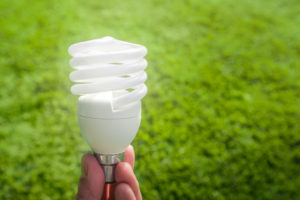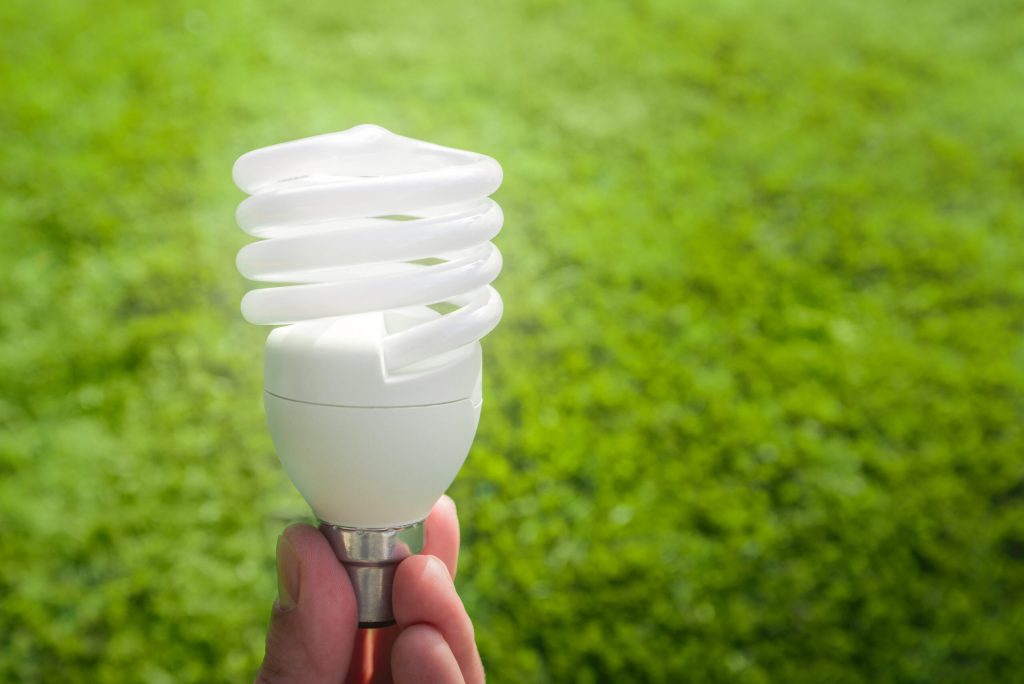 This blog post was updated on February 17, 2021.
This blog post was updated on February 17, 2021.
For many homeowners, one bill that they can’t escape from is their monthly utility bill.
The average residential monthly electric bill was $115 in 2019, which equals a whopping 1,380 per year.
If you want to save on your utility bills, applying these five energy saving tips can help in the long run.
1. Save Water with WaterSense®
According to the EPA, by replacing old, inefficient toilets with WaterSense® labeled models, the average family can reduce water used for toilets by 20 to 60 percent—that’s nearly 13,000 gallons of water savings for your home every year! They could also save more than $110 per year in water costs, and $2,200 over the lifetime of the toilets.
Nationally, if all old, inefficient toilets in the United States were replaced with WaterSense® labeled models, it could save 520 billion gallons of water per year. That’s equivalent to the amount of water that flows over Niagara Falls in about 12 days.
2. Get Some Bright Ideas
How you light your home can also make a difference in the size of your electric bill.
Energy-efficient lightbulbs such as halogen incandescents, compact fluorescent lamps (CFLs), and light emitting diodes (LEDs) use about 25 -80 percent less energy than traditional incandescents and can last 3-25 times longer, saving you money.
Not only that, by replacing your home’s five most frequently used light fixtures or bulbs with models that have earned the approval of ENERGY STAR®, you can save $75 every year.
3. Dial it Back
Another great way to save money on your energy bills is with a programmable thermostat. These devices are easy to use and let you set the temperature for your home, even if you’re not there.
The benefit comes from the savings in energy you can gain by using less energy when you’re not home.
According to the U.S. Department of Energy, you can save as much as 10 percent a year on heating and cooling by simply turning your thermostat back 7°-10°F for 8 hours a day from its normal setting.
You can also save energy in the winter by setting the thermostat to 68°F while you’re awake and setting it lower while you’re asleep or away from home. In the summer, you can follow the same strategy by keeping your house warmer than normal when you are away, and setting the thermostat to 78°F (26°C) only when you are at home and need cooling.
4. Keep It Chill
Have an older refrigerator sitting in your garage or basement? Make sure it doesn’t cost you money. Old refrigerators and freezers can consume as much as four times more energy than newer models and could be costing you up to $150 a year in electricity. If you’re looking to upgrade, many utility companies will recycle your fridge for you and will even offer you a rebate on a newer energy-efficient model.
5. Home Energy Audit
Looking for help with your home utilities? Your local utility company wants to help too. Many utility companies now offer a home energy audit. They’ll perform a home inspection, perform diagnostic tests and identify energy-saving opportunities.
They can even provide you with energy efficient light bulbs, power strips, low-flow shower heads, and other freebies to help bring down your utility costs.
Many will even provide rebates and help you to get special credits to offset the cost of energy saving home improvements.
Looking for more ways to save on your monthly bills? Having trouble managing your debt or creating a budget? Our certified credit counselors can help! To learn more, schedule a free counseling session today or call us at 800-920-2262.






